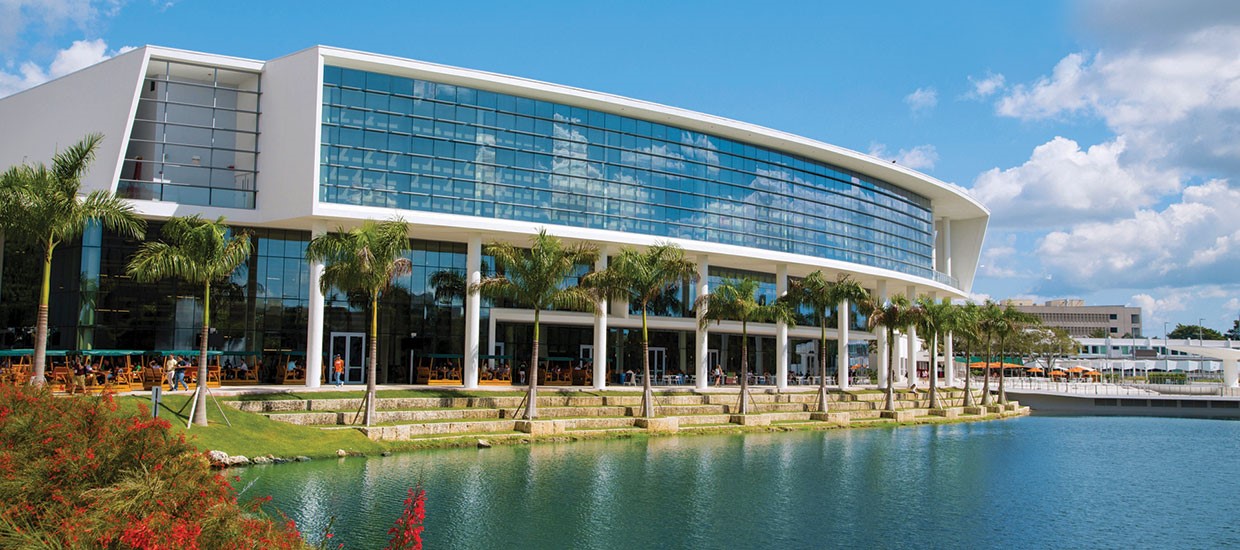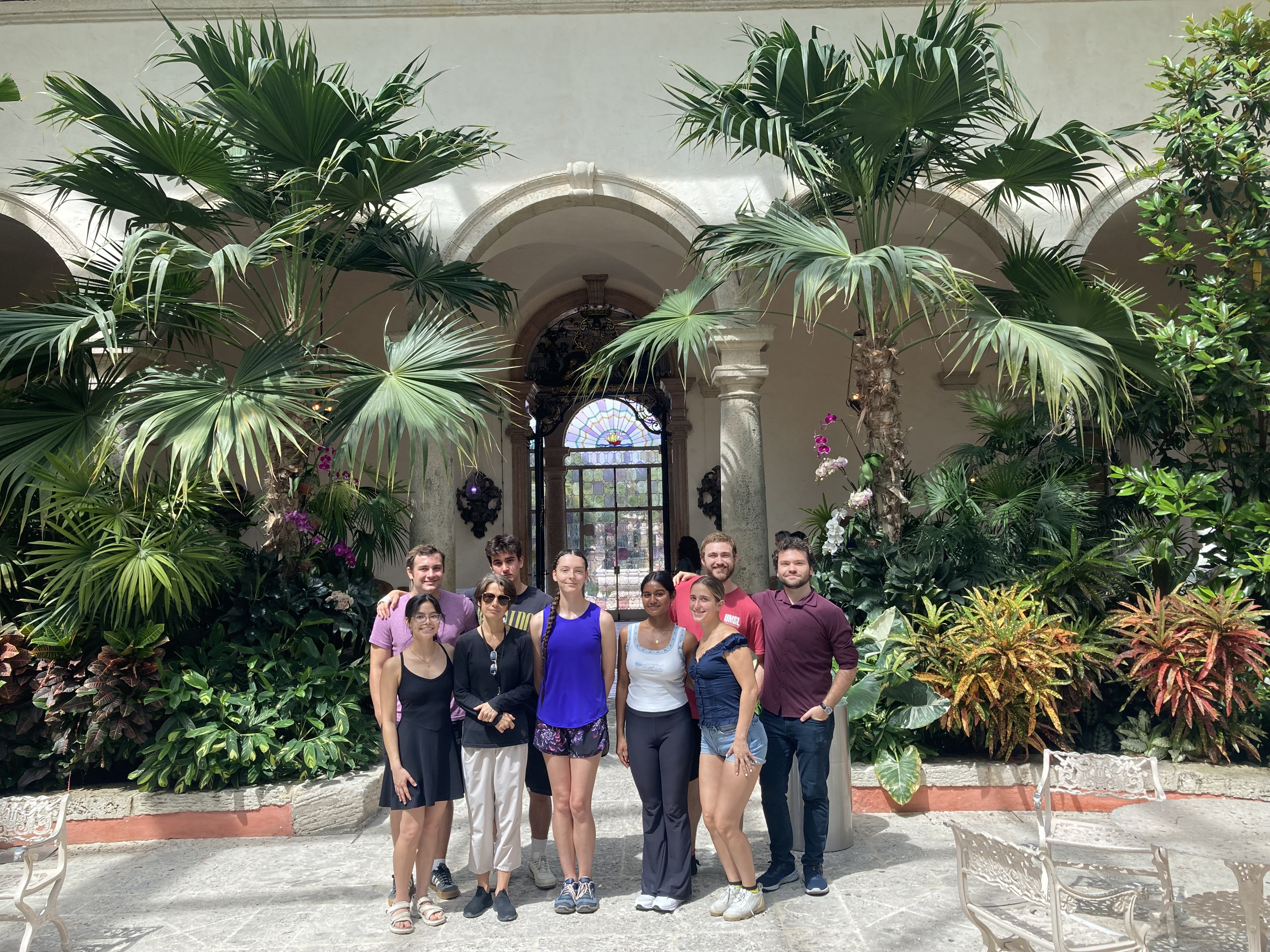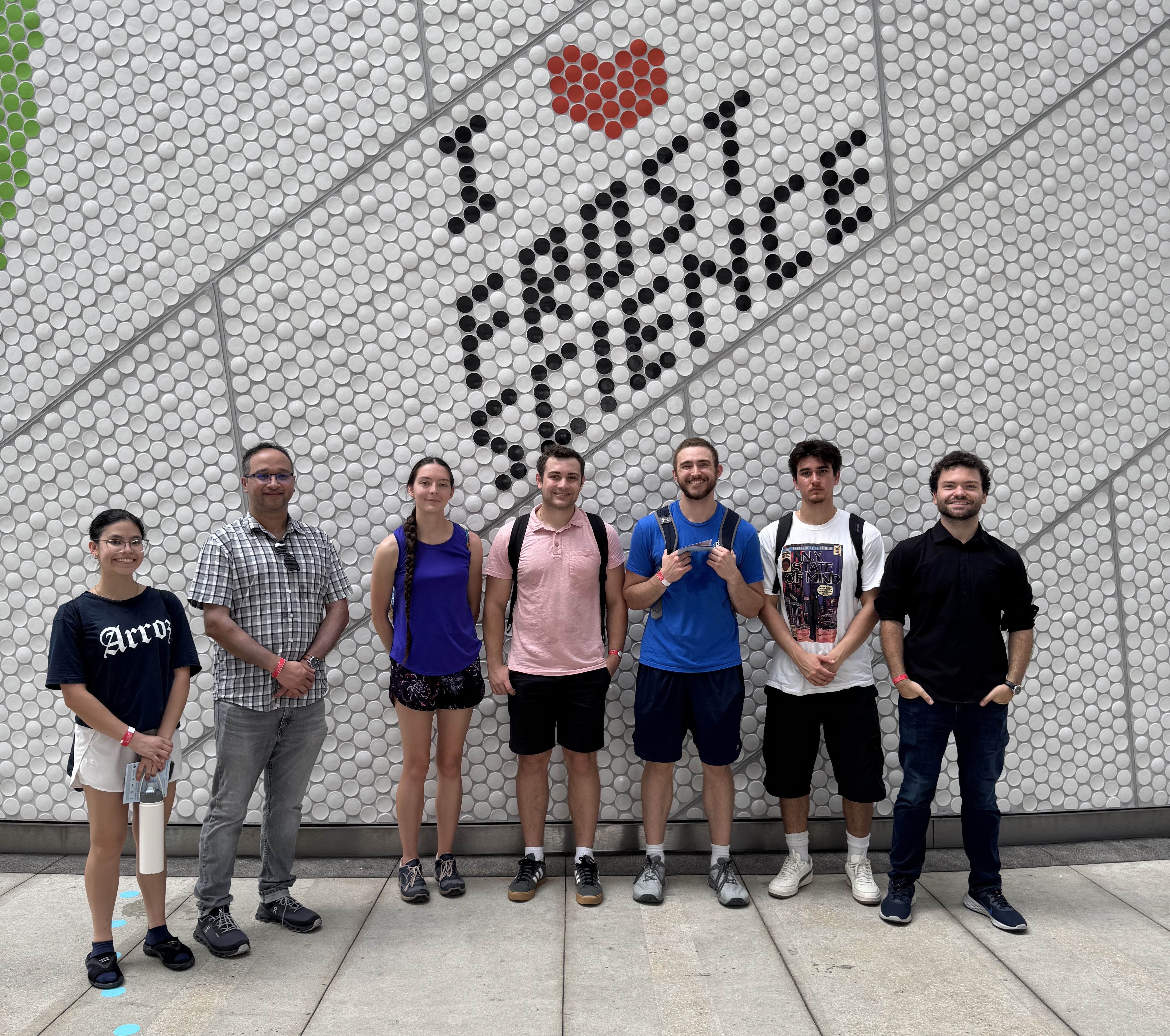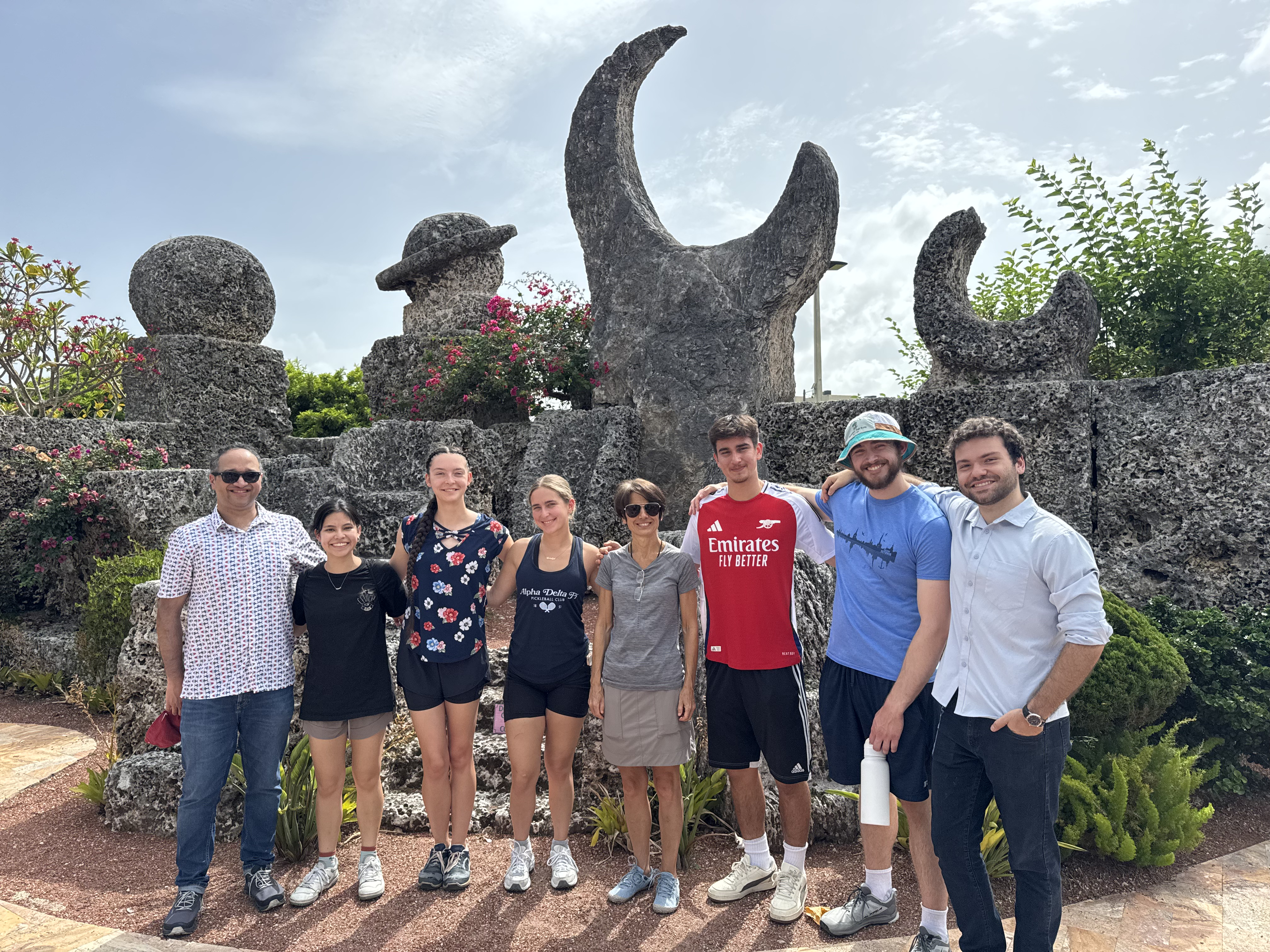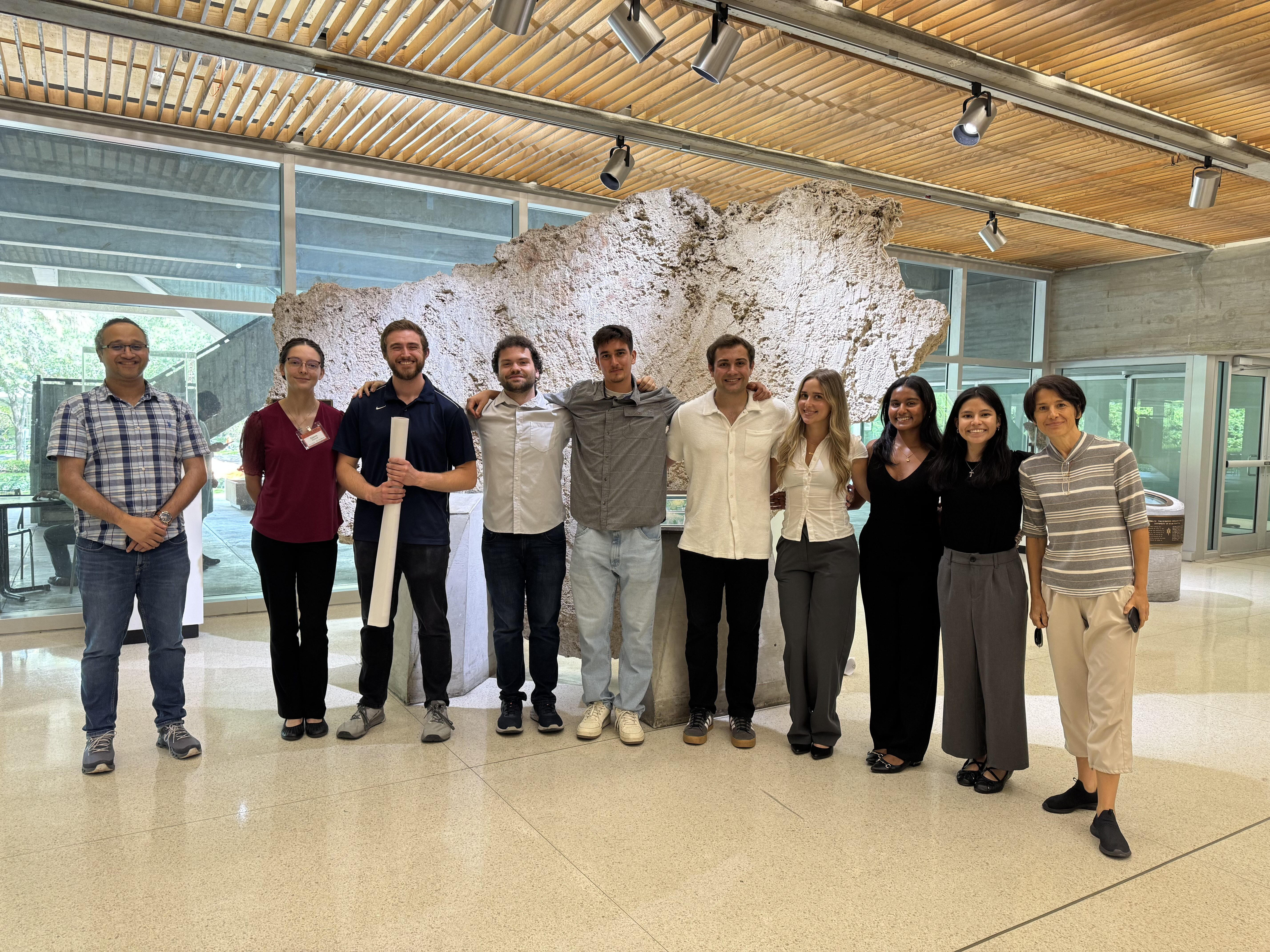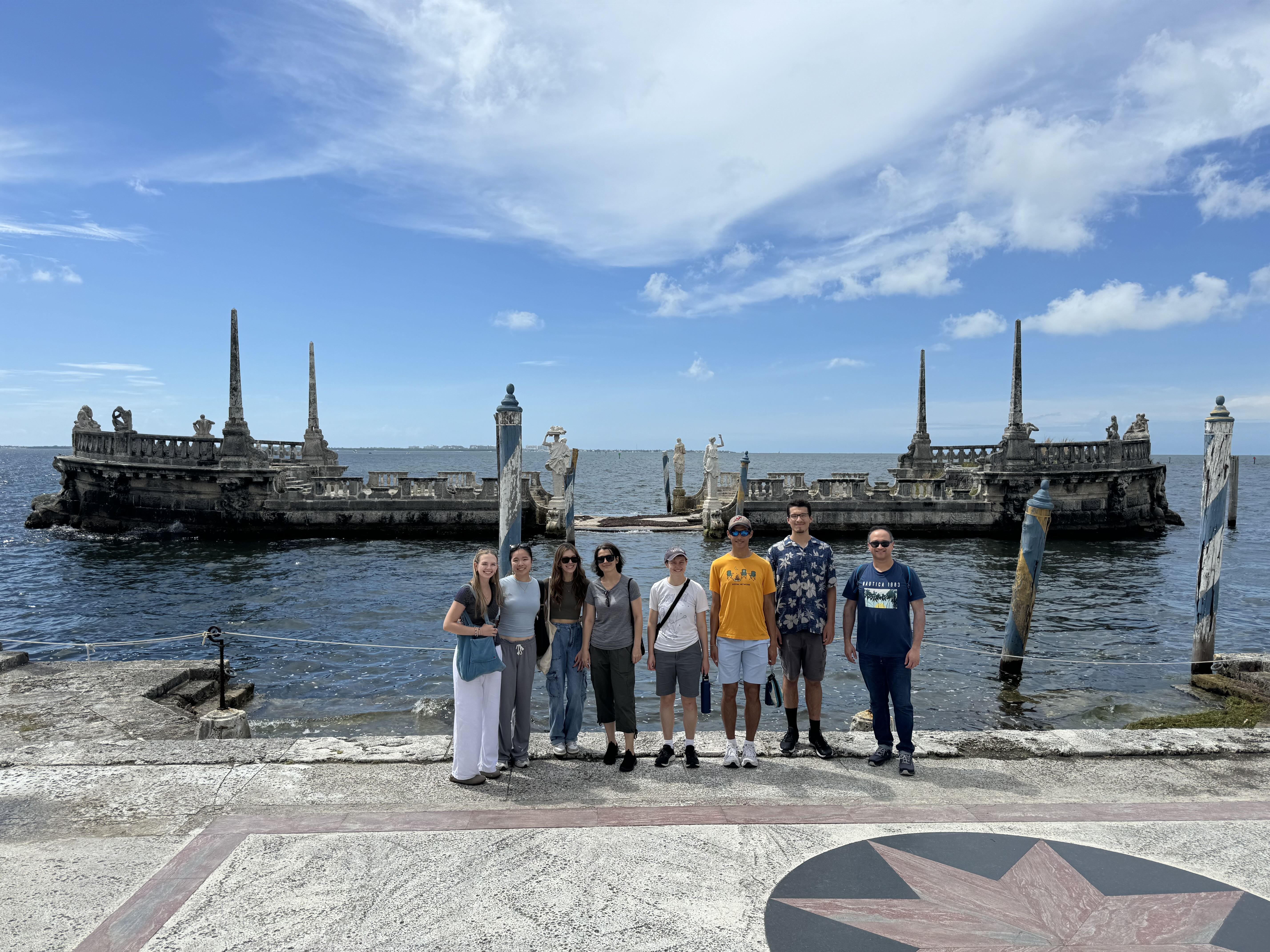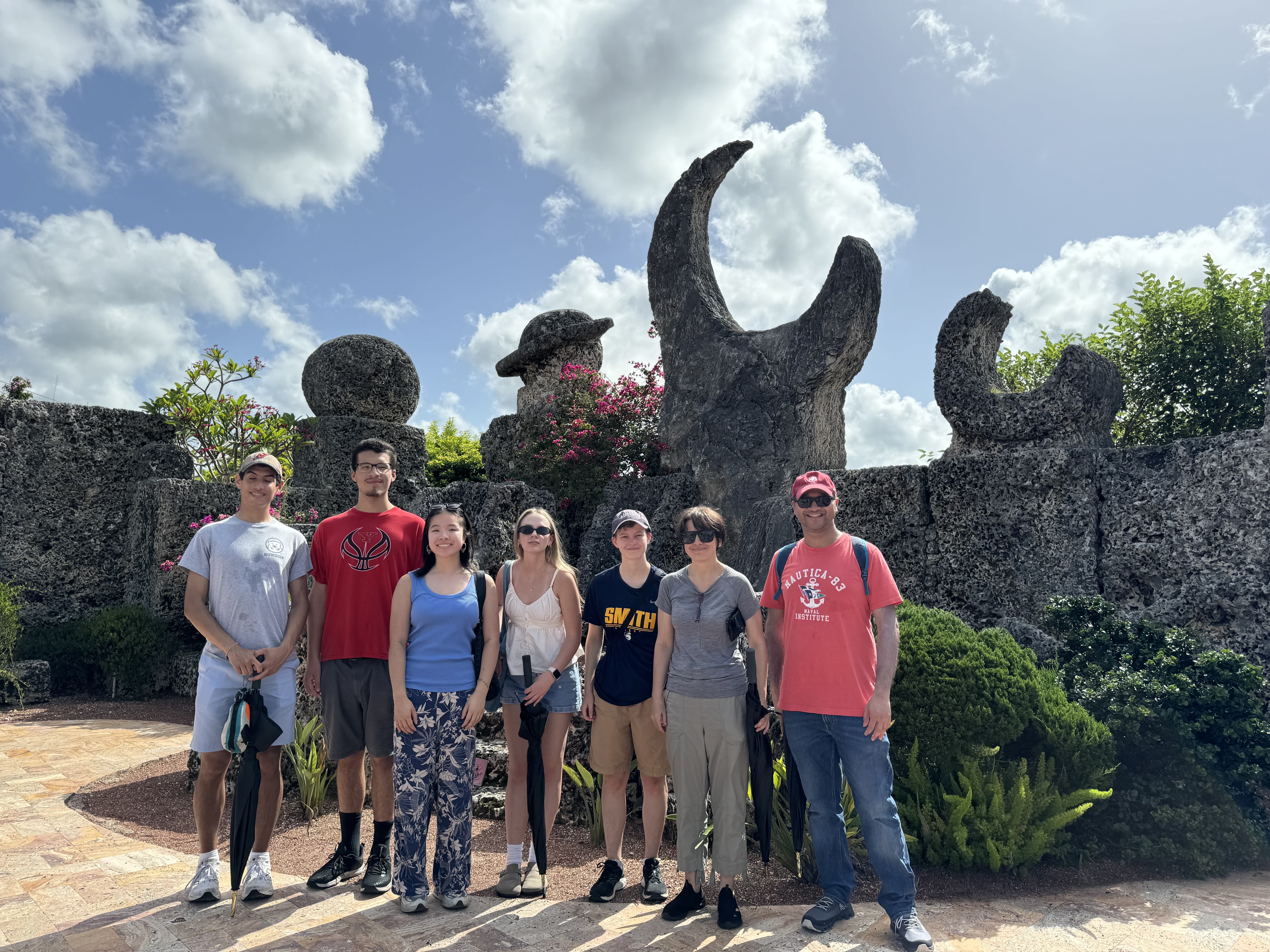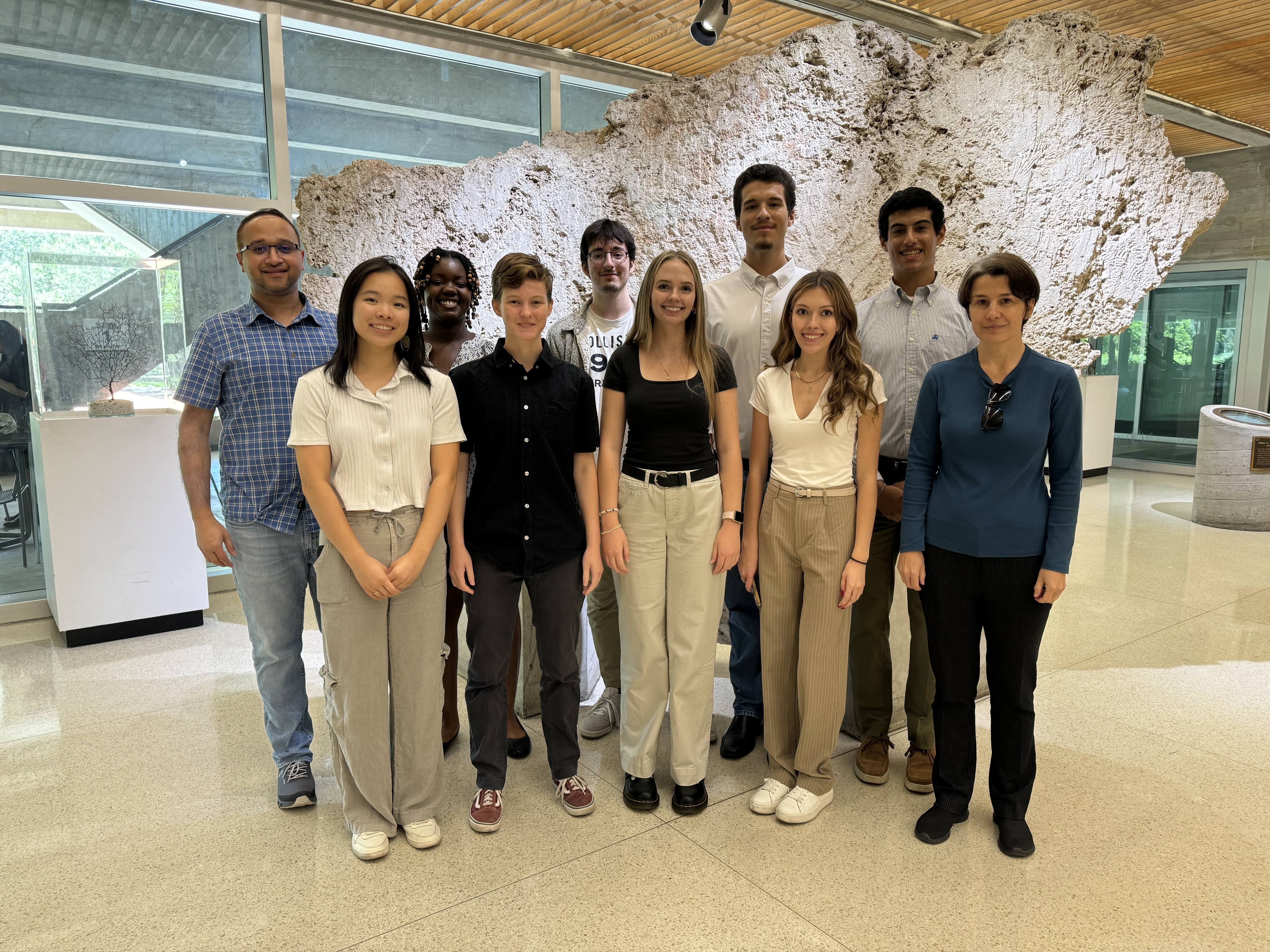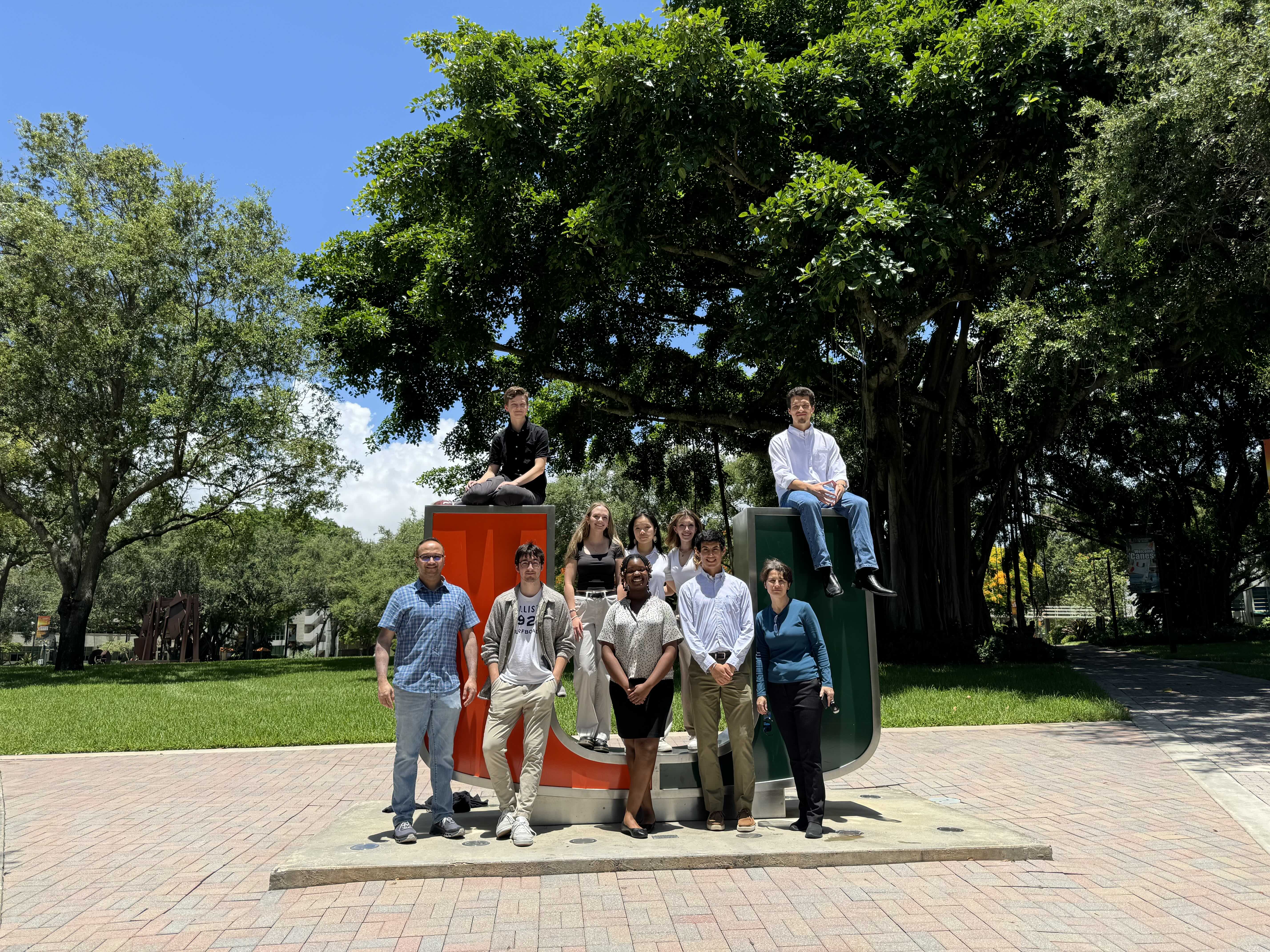Modified random walks to characterize exploration and navigation in crawling insects
Mentor: Dr. Mason Klein
What do animals do, and how exactly do their actions arise? In this inter-disciplinary biophysics project, students will use physics methods and models, such as the random walk, to study locomotion and navigation in crawling insects. They will combine existing techniques with their own modified instruments to characterize how insects respond to multiple stimulus inputs at the same time while navigating the surrounding environment. Possible stimuli to study include temperature, odorants, light, mechanical vibration, gravity, electric fields and food resources. Students can perform data analysis on their own experimental recordings as well as crowdsourced data from advanced lab textbook users. Working with Drosophila larva, a simple model organism with readily quantifiable behavior patterns allows us to understand on a fundamental level how living systems process incoming information and convert it to physical output. Generating predictive mathematical filters of the probabilities of various behaviors, especially with multiple stimuli involved, will help establish how, at a whole-organism level, the brain transforms sensory input. Students more inclined towards optical imaging of the brain would have the opportunity to use the lab’s 3D spinning-disk confocal microscope to record neural circuit activity in vivo, as well as its new femtosecond laser for ablation of single cells. Students will learn the basic techniques for running insect behavior experiments, as well as fabrication by building or modifying instruments, graphical programming, hardware manipulation and analysis with e.g., LabVIEW, MATLAB and Igor Pro, as well as advanced microscopy and optics used for imaging and microsurgery through fs laser ablation. The research will be included in publications, whether as part of a larger set of experiments (e.g., combinations of stimuli as part of a broader multi-sensory integration paper), or as a smaller contained project (e.g., electrotaxis).
Biophysics of swimming and feeding in marine invertebrate larvae
Mentor: Dr. Vivek Prakash
Marine animals generate fluid flows for locomotion, feeding, predator evasion, reproduction, physiology and development. Many benthic marine invertebrates (e.g., sea stars) undergo an indirect mode of development involving pelagic larval stages. Ciliary-based propulsion is widely utilized during this phase for swimming and feeding in sea star larvae, but the underlying fluid dynamics is not well understood. Fortunately, several marine invertebrate species can be brought to the lab, cultured, and spawned to study their biomechanics in detail. The students will focus on studying the biomechanics of sea urchin and coral larvae, which are also ciliated and have different morphologies. Our hypothesis is that their swimming feeding tradeoffs and optimizations in these animals would be different from the sea star larvae, given their different morphologies. Students will learn key experimental skills and techniques from Physics/Engineering such as high-speed and laser imaging, optics, 3D printing, instrumentation, apparatus design, in addition to traditional biology skills like animal rearing and microscopy. These skills together with quantitative analysis techniques such as image processing, mathematical modeling, and computer simulations, will provide students the platform necessary for graduate school and research in Physics, Biophysics, Marine & Developmental Biology, Bioengineering or Medicine.
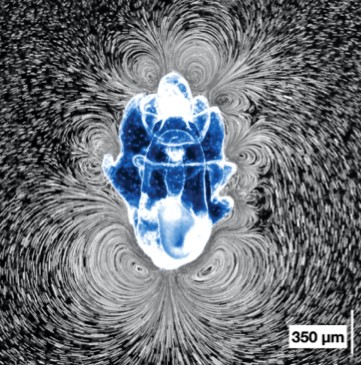
The larvae of sea stars generate arrays of vortices around them. Mentor Prof. Prakash’s previous work showed that fluid dynamics dictates a swimming vs feeding transition
Circadian clocks
Mentor: Dr. Sheyum Syed
This project focuses on the biophysical principles that underlie the functioning of a system of coupled genetic oscillators known as the circadian clock. This timing system is found in most plants and animals and controls some of the most fundamental biological processes in the organism. Experiments are conducted in the fruit fly (Drosophila), a genetically tractable animal with a rich history in addressing biological questions. The laboratory utilizes time-lapse fluorescence imaging to detect molecular kinetics in individual fruit fly cells and combines infra-red and video tracking technologies to capture dynamics of behaving flies. The research draws from disparate fields such as genetics, dynamical systems, statistics and attempts to connect empirical with mathematical analyses. Depending on student’s prior training and interests, they will contribute to the construction of computational tools to better understand a fruit fly’s sleep-wake state transition or color preference state transition. Alternatively, the student may also assist with the generation of a new genetic line of fruit fly and then go on to test behavioral patterns of the novel stock. For the student more drawn to instrument building, we may offer projects aimed at improving current methods of tracking fly activity. Due to the cross-disciplinary nature of our research, the REU trainee will gain new knowledge in computer programming, fly genetics and behavioral analyses. Projects will be well-defined such that their effort results in a tangible product, such as a computer program, a fly line or self-contained portion of a larger instrument.
Quantum computing
Mentor: Dr. Rafael Nepomechie
An international race is currently underway to develop quantum computers, as well as the quantum algorithms that will run on these devices. The impact of this enormous effort - if successful - will also be enormous. Significant progress has already been achieved: some quantum algorithms that outperform corresponding classical algorithms are known (for example, those of Shor and Grover); and some primitive devices are already available (from IBM, Google, etc.). This research project will be on the simulation of quantum mechanical systems, which is one of the promising directions in Quantum Computing. The goal will be to prepare exact eigenstates of certain multi-qubit Hamiltonians. The project will involve finding a suitable algorithm and implementing it in Qiskit. The minimum prerequisites are familiarity with complex numbers, vectors, and matrices. Ideally, the student will also have some familiarity with quantum mechanics, linear algebra, and python. Through this project, the student will gain hands-on experience with programming a quantum computer, will become aware of the limitations of currently available devices, and will acquire a deeper understanding of quantum mechanics. This project will open the door for the student to pursue Quantum Computing further either in private industry, or in graduate school. Moreover, various skills developed in this project (including scientific programming and linear algebra) will be transferable to most other scientific disciplines.
Developing the next generation of X-ray instruments
Mentor: Dr. Massimiliano Galeazzi
Astronomical objects such as Black Holes and Supernovae inject energetic X-ray radiation into space. Since X-rays do not penetrate Earth's atmosphere, detectors used to study this emission are mounted either on board of sounding rockets or satellites. The data collected is used to investigate the properties of interstellar and intergalactic gas (the reservoir for future galaxies and stars) to understand the evolution of our Universe. In this project, students interested in hardware development will have the opportunity to work on developing the next generation of X-ray instruments that will be flown on NASA sounding rockets. Students will be involved in day-to-day laboratory operations, including instrument design and testing, and will learn standard laboratory tools and techniques while working in a team that includes faculty, graduate students, and high school students. Students that are more interested in computational work will have the opportunity to analyze data from XMM-Newton and Chandra X-ray Observatories for study of the Diffuse X-ray Background. The students will learn data reduction and analysis, including basics of plasma physics and spectral fitting. By learning first-hand how X-ray telescopes are designed and built, and how data from those instruments is analyzed, students will gain a unique perspective that links the instrument performance to the quality of the data. The laboratory and analytical skills will be beneficial for future endeavors in a larger variety of fields.
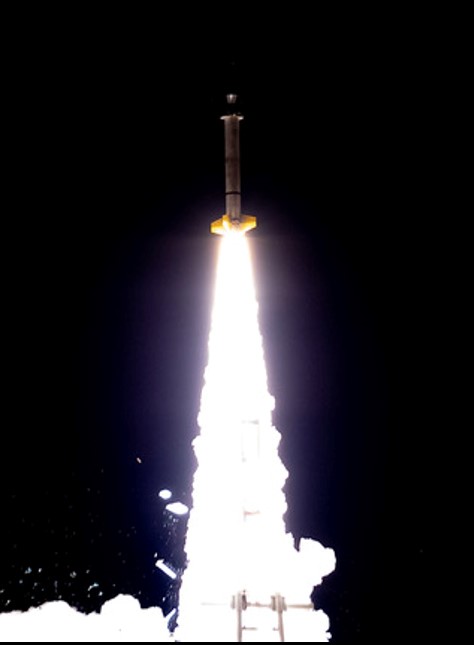
NASA’s Sounding rocket 36.363-Galeazzi carrying the DXL X-ray telescope by the University of Miami is taking off from Wallops Flight Facility in Virginia on Jan. 9, 2022.
Random light design with structured spin and orbital angular momentum states
Mentor: Dr. Olga Korotkova
Structured light, i.e., light at specific Spin and Orbital Angular Momentum (SAM and OAM) states, also known as high photonic states, is a rapidly growing field in classical and quantum optics. The ability to generate and control structured light states enables diversification of channels for optical carriers for transmission of more information through various natural media (atmosphere, oceans, bio-tissues) and man-made media (fibers) for imaging, sensing or communications. However, structured light is often randomized during the operation in complex/random media, the high photonic states are coupled, and the information is partially lost. Predesigning light at specific selection of SAM/OAM states enables formation of robust channels for improved information transfer. The students will be first trained in measuring random light via the extensions of the Young’s experiment to high photonic states, with the help of simple additions to the classic double-slit setup. Then they will be taught the matrix theory of physical & statistical properties of structured light, and the methods used to characterize, model, experimentally realize and optimize it. They will also learn about the basic concepts of information transfer via optical channels, and estimation of their performance. Towards the end, students will be given a task involving calculation or experimental test (depending on preference) involving structured light states. It is expected that each specific task will lead to a journal publication.
Transport properties of novel materials
Mentor: Dr. Joshua Cohn
Cohn’s lab investigates the transport properties (electrical and heat conduction, thermoelectric effects) of potentially useful materials (e.g., energy applications, magnetoelectronics) that also possess interesting physics (low-dimensionality, strong correlations, and phase transitions). Research projects would engage students in many of the aspects of sample preparation and measurement: X-ray diffraction measurements to determine crystallographic orientation of single-crystal specimens, use of a table-top sputtering system to deposit thin film contacts using shadow masking, construction of fine-wire thermocouples, contacting specimens with fine wires and conductive epoxies, testing electrical connections with current sources and sensitive nanovoltmeters, assisting with cryogenic measurements, data acquisition and analysis.
The CO Mapping Array Project (COMAP)
Mentor: Dr. Joshua Gundersen
The CO Mapping Array Project (COMAP) is an NSF-funded project that uses spectroscopic techniques at cm wavelengths to measure redshifted carbon monoxide (CO). It is one of the first instruments to use the new technique of Line Intensity Mapping which measures the aggregate emission of spectral lines from unresolved galaxies and the intergalactic medium, and the first instrument to make a measurement of the clustering component of the CO power spectrum. COMAP’s measurements can be used to trace the distribution and properties of galaxies throughout the cosmos and throughout cosmic time. The technology development planned for this project will enable the next generation of COMAP to be both more sensitive and increase the frequency coverage yielding deeper maps that probe the early Universe, back to the Epoch of Reionization. Depending on the student’s interests and experience, the research can either focus on instrument design associated with the next phase of COMAP (engineering-inclined student) or on understanding principles of line intensity mapping to measure properties of the early universe (physics/astronomy-inclined student), with results presented at e.g., SPIE or AAS meetings, respectively.
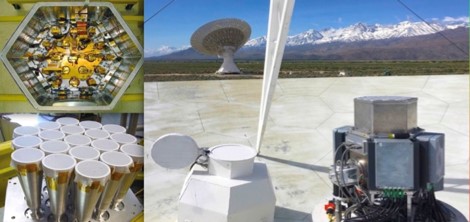
The COMAP experiment: the COMAP cryostat (upper left) designed by an undergraduate (H. Medrano) at the University of Miami. The cryostat cools COMAPs receiver array to 15K to better detect the faint CO signals that are directed into the cryostat via the feedhorns (lower left) that reside on top of the cryostat at the antenna’s focus, as shown on the right.
Harnessing Self-Assembly of Molecular Legos toward Next-Generation Nanotechnology
Mentor: Dr. Kun Wang
Nature provides an extraordinary variety of molecular "Lego bricks" that assemble into intricate structures, far surpassing the versatility of their plastic counterparts. These molecular building blocks are highly tunable, capable of forming connections through diverse mechanisms, and even self-assembling into hierarchical structures, unlocking a wealth of functional possibilities. The REU project at the Wang Group delves into this fascinating interplay of physics, chemistry, and biology at the molecular scale. Using advanced scanning probe microscopy techniques—scanning tunneling microscopy (STM) and atomic force microscopy (AFM)—the team investigates how individual molecular building block self-assemble into complex nanostructures and how these structures respond to external stimuli such as heat, light, solvent, and electric field. This interdisciplinary approach not only deepens our understanding of molecular-scale behavior but also paves the way for designing robust, energy-efficient molecular devices with unprecedented properties, opening new frontiers in materials science and nanotechnology.




